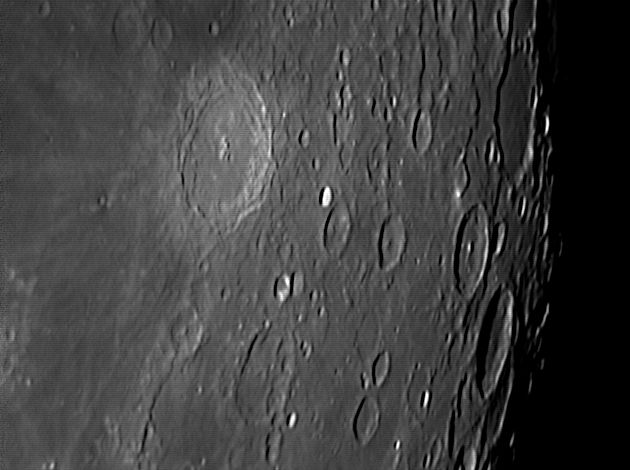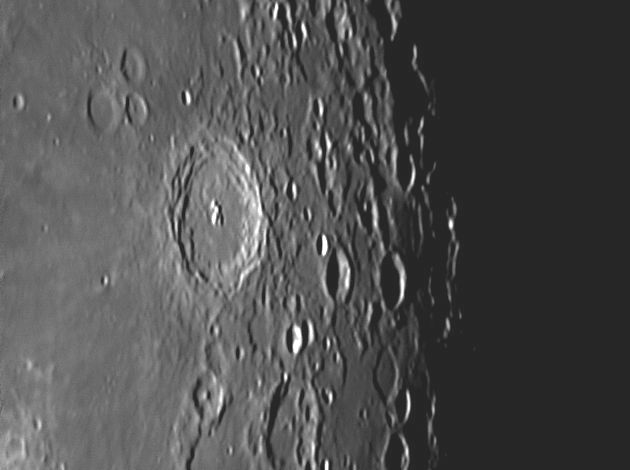

Move your mouse over the picture to see the names of the various craters.

This picture was taken about a day after full Moon, so the right-hand edge of this picture is the termintor not the limb. Nevertheless this area is the far east and just south of the lunar equator. The large crater in the centre is Langrenus, 136 Km in diameter, 2600 metres deep and the central mountains rise to 1000 metres above the floor.
Processing: Registax. 89 frames stacked. Wavelets 1-2 = 10
The scale markers are approximately 100 Km north and west and apply at Langrenus.
The picture was taken with a ToUcam attached to my LX200 on 16th November 2005 at 20:45 UT,
when the Moon was 15.5 days old.
Date and Time: 16th November 2005 20:45 UT
Camera: ToUcam 740K
Telescope: LX200 at prime focus with IR-pass filter
Capture: K3CCDTools. Low gamma, 1/33", 3% gain, 728 frames

And the same area imaged the following day. You can see how the terminator has moved in the 24 hours between the two pictures. La Peruse and Ansgarius have disappeared into darkness, and the four craters to the north of Langrenus have become clearer as the shadows lengthen. These four craters used to be called Langrenus B, C, F, and K but have now been renamed Naonobu, Acosta, Bilharz, and Atwood. This is part of a gigantic task of replacing all lettered names with the names of thousands of worthy people.
The picture was taken with a ToUcam attached to my LX200 on 17th November 2005 at 20:26 UT, when the Moon was 16.6 days old.
Date and Time: 17th November 2005 20:26 UT
Camera: ToUcam 740K
Telescope: LX200 at prime focus
Capture: K3CCDTools. 50% gamma, 1/100", 10% gain, 459 frames
Processing: Registax. 99 frames stacked, wavelets 1-2=10, gamma 0.8 Home Back to SE Quadrant